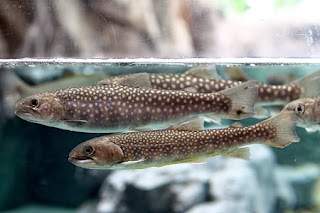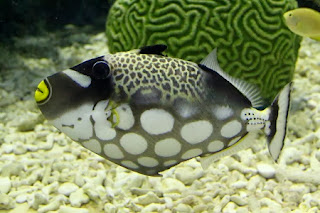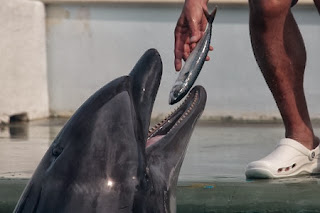I visited SHINAGAWA AQUARIUM to see biological impacts of Fukushima No.1 nuclear power plant accident. Though I have visited various places in Japan to see the health consequence of the accident, I have never found any effect against creatures in Japan.
SHINAGAWA AQUARIUM shows that a waterfall cascades into a mountain stream, becomes a river, and then flows into the Tokyo Bay. You will be able to observe these recreated scenes, the tidal flats and rocky shores of the Tokyo Bay, and the creatures that inhabit them. We can see not only Japanese creatures but also those of the world. There is also a stadium where you can enjoy dolphin shows and sea lion shows.
So I visited SHINAGAWA AQUARIUM to see effects of the accident against marine creatures which are grown up by Japanese food and water.
Fortunately, I could see them grown up safely and I couldn't find any impact of the accident. It seems that there is no problem for childbirth and child-rearing in Tokyo Japan.
Posted by Yoshitaka Kiriake from Japan on October 8, 2013.
品川水族館は主に東京の川と海辺の水生生物を展示している。氷の妖精と呼ばれるオホーツク海のクリオネや水面上の餌を打ち落とす鉄砲魚のショーを見ることができた。
Sea angel (Clione limacina)
Sea angel lives in the Sea of Okhotsk, northern sea of Hokkaido prefecture.
About SHINAGAWA AQUARIUM
Google Maps
SHINAGAWA AQUARIUM is located in Shinagawa, Tokyo.
Japanese char
Pale chub
Japanese Freshwater Crab
Rainbow trout
Musashitomiyo : Musashi ninespine stickleback
It is a small fish and endangered species.
Japanese sea perch
Cherry bass
Fox-face
Orange anemone fish
Orangestrip prawn goby
White Socks
Shrimp Fish
Purple blotch basslet
Bluestreak fusilier
Triggerfish
Redtooth triggerfish
Archer fish
(鉄砲魚)
Ornate cowfish
Old wife
Elephant-Nose Fish
Arapaima
Leaf Fish
Natterer's Piranha
Dolphins show us fine performance.
Dolphins eat Japanese fish.
Magellanic Penguin
Swallowtail butterfly
I saw many butterflies in Tokyo this year and I couldn’t see any deformity or abnormality.
2 and half years have passed since Fukushima Daiichi nuclear power plant accident. I have visited various places of Japan to see the health consequence of the accident.
Fortunately I have never found any impacts by the accident among Japanese creatures. As far as I know, nobody has health problem which is caused by the accident in Japan.
Our Prime Minister Abe assures that "the situation is under control" and "there will never be health problems." He also said that "Tokyo is 250 kilometers away from Fukushima, and the kind of danger that you imagine does not exist in Tokyo. Tokyo is a very safe city."
As Tokyo is very far away from Fukushima, people in Tokyo have no concern about the nuclear power plant accident. People in Tokyo have already forgotten the accident, because it is very far away from the site and radioactive materials cannot reach there.
We know there is no problem for child birth and child rearing in Tokyo. So people in Tokyo are living without any concern about the accident.
公衆衛生ネットワーク
Public Health Network in Japan


































Are you serious?
返信削除Exactly. Japan is safe except for Fukushima.
返信削除